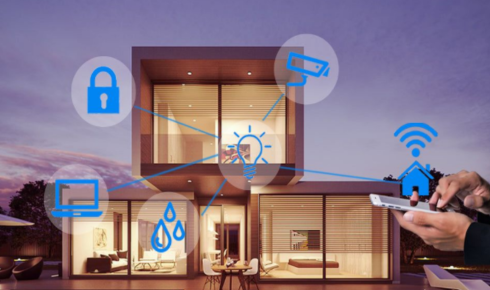Technology has changed how we live, but more importantly, it’s transforming how we consume energy. As homes grow smarter, the ability to control lighting, climate, and appliances through automation is helping homeowners rethink their energy use. This isn’t just a futuristic luxury anymore—it’s a practical, accessible solution to modern problems like high utility costs and environmental concerns. At the center of this shift is the rise of the smart home automation system.
Reducing Energy Waste With Real-Time Controls
A smart home automation system refers to an integrated network of devices and systems within a home that can be controlled remotely or automatically. This includes thermostats, lights, plugs, HVAC systems, and more. The real power lies in the connectivity. With everything linked through a centralized platform or app, homeowners gain full control in real time. Leaving lights on? The system shuts them off. Forget to adjust the thermostat? It does it for you. Over time, this active energy management helps cut down waste significantly.
Maximizing Efficiency With Smart Home Automation System
Smart home automation systems don’t just offer convenience—they create patterns. They learn from your habits. If you leave for work at 8 a.m. daily, the system can turn off unnecessary lights, reduce heating or cooling, and even delay your water heater. Over time, these small shifts add up. According to studies, homes equipped with smart automation can reduce energy use by up to 30%. By defining energy zones and running appliances only when needed, smart systems quietly make efficiency the new standard. With smart sensors and learning algorithms, the Smart Home Automation System redefines how modern homes interact with energy.
Integrating Smart Lighting for Lower Consumption
Lighting is one of the easiest places to start saving energy, and smart automation makes it effortless. Motion sensors, automated dimmers, and programmable timers reduce waste, especially in larger homes. Instead of lights staying on for hours in unused rooms, smart bulbs can adjust brightness and shut off automatically. During peak daylight hours, systems can dim interior lights to rely more on natural sunshine. These seemingly simple changes translate into measurable savings month after month.
Appliance Scheduling for Energy Balance
Modern appliances are already efficient, but smart automation enhances that by managing usage timing. A smart home automation system allows you to schedule dishwashers, washing machines, or even charging stations during off-peak energy hours. This not only balances the load across the day but can also lower your electricity bill, especially in areas with variable energy rates. When devices run when energy demand is low, the strain on the grid decreases. It’s a small shift in behavior with a big impact on national energy efficiency.
Remote Monitoring and Instant Adjustments
One of the unsung benefits of automation is control from anywhere. Whether you’re on vacation or just out for dinner, you can manage your home’s energy use from your smartphone. Forgot to turn off the AC? Tap a button. Want to check if lights are left on upstairs? One glance tells you. This kind of constant visibility empowers people to make smarter decisions. It brings a sense of control that was never possible before, giving homeowners confidence in their energy-saving efforts.
Conclusion
The path to energy efficiency is no longer paved with guesswork and manual habits. Smart home automation systems bring intelligence, adaptability, and control into everyday life. They learn, respond, and optimize how your home uses power—making sustainability simple. As technology advances and more people adopt these systems, the cumulative effect on global energy efficiency could be profound.
